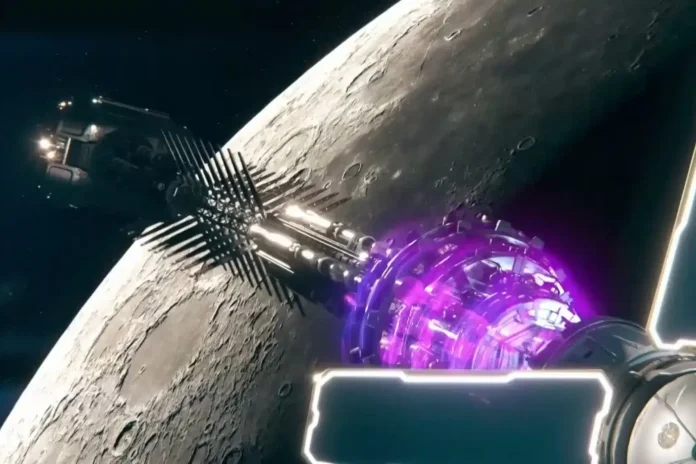Rolls-Royce, the renowned name associated with luxury cars, might surprise many with its new venture beyond the showroom floor. The company is a multifaceted engineering giant with expertise in areas like aero engines and, as they recently revealed, their Rolls Royce Nuclear Reactor. Their latest project sets their sights on the cosmos – developing a micro-nuclear reactor to change space travel and mining operations on the Moon and Mars.
Rolls Royce Nuclear Reactor Expertise
Dave Gordon, head of Rolls-Royce’s defense division, explains their focus on micro-nuclear reactors. The company envisions this technology playing a dual role: propelling rockets at high speeds during space travel and then being repurposed on the Moon or Mars to provide a reliable energy source for mining equipment. This innovation has the potential to enhance the efficiency and feasibility of deep space exploration greatly.
Rolls-Royce has a unique advantage in this adventure. “We’re the only company on the planet that does mechanical, electrical, and a full end-to-end lifecycle of nuclear capability,” says Gordon. Their 60-year experience developing nuclear-powered submarines for the Royal Navy provides a valuable foundation for this space travel managing project. Submarines and spacecraft share similarities, being confined environments requiring long-term endurance and a compact but strong power source. Using this established expertise allows Rolls-Royce to adapt its knowledge to the challenges of space.
Collaboration and Competition in the Space Race
This attack on nuclear space propulsion is not happening in isolation. Earlier this year, Rolls-Royce collaborated with the UK Space Agency on a joint study exploring the potential of nuclear power for space rockets. This cooperation reflects a growing global interest in this technology. China has already begun utilizing micro-nuclear reactors to power batteries and smartphones, demonstrating the versatility of this technology.
The private sector also plays a vital role in this mission. With its recent successful Lunar Lander mission, companies like SpaceX are pushing the boundaries of space exploration. These advancements pave the way for the sustained human presence on the Moon and Mars that Rolls-Royce’s nuclear reactors can facilitate.
The Fight of Lunar and Martian Resources
While mining on the Moon or Mars might seem like science fiction, the possible rewards are substantial. The lunar surface holds valuable resources like helium-3, a rare element with applications in nuclear fusion technology. This could revolutionize energy production on Earth. Additionally, mining the Moon could lessen dependence on a single source for critical materials. Currently, China supplies a shocking 90% of the world’s rare earth metals, essential for electronics and clean energy technologies. Developing lunar mining capabilities could diversify this supply chain and ensure greater resource security.
Challenges and Opportunities
Developing and deploying nuclear reactors in space presents a unique set of challenges. Safety concerns regarding potential accidents and handling radioactive materials in space must be carefully addressed. International regulations and frameworks for such ventures must be established. Despite these difficulties, the future benefits of nuclear space technology are undeniable. Rolls-Royce’s project represents a great step towards a future where humanity’s reach extends beyond Earth, powered by clean and efficient nuclear technology.
This innovative project positions Rolls-Royce as a key player in the expanding space industry. Their nuclear technology expertise, coupled with collaboration with space agencies and private companies, could help in a new era of space exploration and resource utilization. Only time will tell how this ambitious Rolls Royce nuclear reactor project unfolds, but it signifies a big step toward humanity’s journey to explore and potentially inhabit the cosmos.



